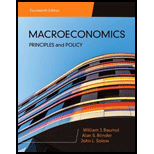Q5. s) Let's consider the Toilet Paper (TP) market from the first lecture. Assume that the supply curve is linear in the short run and there is no capacity constraint, i.e., suppliers can adjust supply in the short run based on market demand. You can also assume that the demand curve for toilet paper is linear. a) Plot the demand and supply curves for TP in a graph. Label the equilibrium price and quantity in this market. b) Label and shade the consumer surplus and producer surplus in this market. Now, assume that the demand for TP increases during the pandemic. c) Depict graphically the shift in TP demand during the pandemic, the new equilibrium price, and the new equilibrium quantity. d) Label and shade the consumer and producer surplus in the pandemic market. e) Is total surplus higher or lower in the post-pandemic market? Next, consider the case of price controls. Imagine that the government wants to artificially lower prices back to the pre-pandemic equilibrium price. f) Depict the new equilibrium price and quantity in this market graphically. g) Label and shade the consumer and producer surplus in this market. Do consumer and producer surplus increase or decrease in the post-pandemic market from capping prices? h) Assume that the market is competitive and there are no externalities. In the post- pandemic market, which scenario is the most economically efficient (i.e., has the least deadweight loss)? The scenario with the price cap or without the price cap?
Q5. s) Let's consider the Toilet Paper (TP) market from the first lecture. Assume that the supply curve is linear in the short run and there is no capacity constraint, i.e., suppliers can adjust supply in the short run based on market demand. You can also assume that the demand curve for toilet paper is linear. a) Plot the demand and supply curves for TP in a graph. Label the equilibrium price and quantity in this market. b) Label and shade the consumer surplus and producer surplus in this market. Now, assume that the demand for TP increases during the pandemic. c) Depict graphically the shift in TP demand during the pandemic, the new equilibrium price, and the new equilibrium quantity. d) Label and shade the consumer and producer surplus in the pandemic market. e) Is total surplus higher or lower in the post-pandemic market? Next, consider the case of price controls. Imagine that the government wants to artificially lower prices back to the pre-pandemic equilibrium price. f) Depict the new equilibrium price and quantity in this market graphically. g) Label and shade the consumer and producer surplus in this market. Do consumer and producer surplus increase or decrease in the post-pandemic market from capping prices? h) Assume that the market is competitive and there are no externalities. In the post- pandemic market, which scenario is the most economically efficient (i.e., has the least deadweight loss)? The scenario with the price cap or without the price cap?
Economics (MindTap Course List)
13th Edition
ISBN:9781337617383
Author:Roger A. Arnold
Publisher:Roger A. Arnold
Chapter3: Supply And Demand: Theory
Section: Chapter Questions
Problem 8WNG
Related questions
Question
not use ai please

Transcribed Image Text:Q5.
s) Let's consider the Toilet Paper (TP) market from the first lecture. Assume that
the supply curve is linear in the short run and there is no capacity constraint, i.e., suppliers can
adjust supply in the short run based on market demand. You can also assume that the demand
curve for toilet paper is linear.
a) Plot the demand and supply curves for TP in a graph. Label the equilibrium price and
quantity in this market.
b) Label and shade the consumer surplus and producer surplus in this market.
Now, assume that the demand for TP increases during the pandemic.
c) Depict graphically the shift in TP demand during the pandemic, the new equilibrium
price, and the new equilibrium quantity.
d) Label and shade the consumer and producer surplus in the pandemic market.
e) Is total surplus higher or lower in the post-pandemic market?
Next, consider the case of price controls. Imagine that the government wants to artificially
lower prices back to the pre-pandemic equilibrium price.
f) Depict the new equilibrium price and quantity in this market graphically.
g) Label and shade the consumer and producer surplus in this market. Do consumer and
producer surplus increase or decrease in the post-pandemic market from capping
prices?
h) Assume that the market is competitive and there are no externalities. In the post-
pandemic market, which scenario is the most economically efficient (i.e., has the least
deadweight loss)? The scenario with the price cap or without the price cap?
Expert Solution
This question has been solved!
Explore an expertly crafted, step-by-step solution for a thorough understanding of key concepts.
Step by step
Solved in 2 steps with 12 images

Recommended textbooks for you

Economics (MindTap Course List)
Economics
ISBN:
9781337617383
Author:
Roger A. Arnold
Publisher:
Cengage Learning



Economics (MindTap Course List)
Economics
ISBN:
9781337617383
Author:
Roger A. Arnold
Publisher:
Cengage Learning



Exploring Economics
Economics
ISBN:
9781544336329
Author:
Robert L. Sexton
Publisher:
SAGE Publications, Inc

